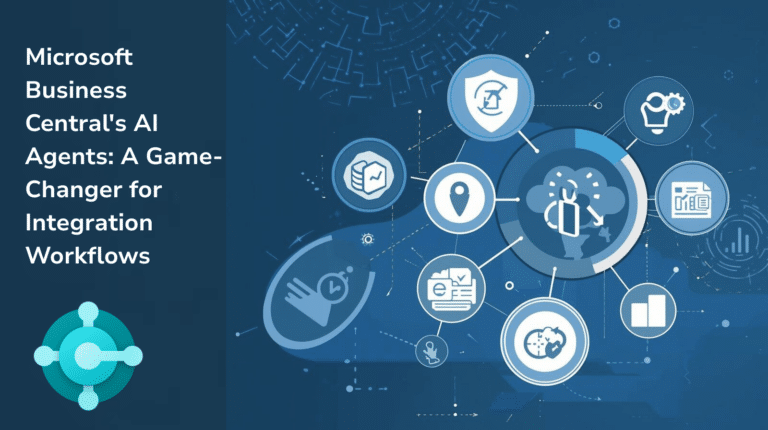Introduction
Small and medium-sized enterprises (SMEs) constantly strive to outshine the competition and achieve remarkable success. But how can SMEs rise above the challenges and unlock their full potential amidst the hustle?
The answer lies in harnessing the untapped power of business information management systems. You can call this a Customer Relationship Manager (CRM) or an Enterprise Resource Planning Sofware (ERP). This revolutionary tool can ignite your SME’s success, propelling it toward unrivalled efficiency, productivity, and growth.
This article will explore the advantages of investing in business information management systems, business process software, and business information management systems usable devices for those considering implementing process improvements for the first time.

Benefits of Investing in Business information management system
1. Enhanced Visibility
Many SME owners struggle with a lack of visibility into their business’s performance due to fragmented data and manual processes. The business information management system provides a centralised platform that consolidates data from various departments, enabling comprehensive real-time insights.
With accurate and up-to-date information readily available, decision-making becomes more informed, strategic, and efficient. SME owners can gain a holistic view of their operations, identify bottlenecks, and make data-driven decisions to drive growth.
2. Increased Productivity
Manual processes often consume significant time and effort, leading to inefficiencies and reduced productivity. Business information management system automates repetitive tasks, streamlines workflows, and eliminates manual errors.
Employees can focus on more valuable lessons by reducing the time spent on administrative and mundane activities, enhancing their job satisfaction and overall engagement. Increased productivity ultimately translates into higher output, improved customer service, and a competitive edge in the market.
3. Standardised Processes
SMEs sometimes lack defined processes, resulting in ad-hoc approaches and inconsistent outcomes. Business information management system offers pre-configured workflows and templates that enable SMEs to establish standardised methods across their operations.
This standardisation fosters efficiency, reduces ambiguity, and ensures consistent results. Moreover, it facilitates seamless collaboration between team members, enhances transparency, and enables better coordination in achieving business goals.
4. Scalability and Flexibility
The business information management system is designed to adapt and scale with the growth of SMEs. As your business expands, the software can accommodate increased transaction volumes, additional users, and evolving requirements.
This scalability ensures that the software remains an asset throughout your business journey. Additionally, modern business information management systems are essential tools allowing SMEs to leverage existing investments and create a seamless operational ecosystem.
Advice for Implementing Business Process Improvements
1. Start Small and Grow
Embarking on a process improvement journey can be overwhelming, particularly for SMEs with limited resources. It is advisable to start with a small-scale implementation in a specific department or process and gradually expand from there.
This approach allows for effective learning and fine-tuning and minimises disruptions to ongoing operations.
Demonstrating success in a controlled environment can build confidence and gain employee buy-in, paving the way for broader adoption across the organisation.
2. Involve the Team
Successful process improvements require the collective effort and commitment of the entire team. Involve your employees from the outset, seeking their input and incorporating their perspectives into the implementation process.
Encourage open communication, provide training and support, and ensure everyone understands the new system’s purpose, benefits, and expectations.
Employees will feel motivated to embrace change and actively contribute to its success by fostering a culture of collaboration and empowerment.
3. Prioritise Training and Change Management
Investing in thorough training and change management initiatives is crucial for a smooth transition to the new business information management system. Ensure that employees receive comprehensive training in using the software effectively, emphasising its benefits to their daily work.
Simultaneously, implement change management strategies to address any resistance or concerns. Communicate the goals and vision behind the process improvements and highlight its positive impact on individuals and the organisation.
Provide ongoing support and resources to address any challenges or questions that may arise during the implementation process. By prioritising training and change management, you can minimise disruptions and maximise adopting and accepting the new system.
4. Focus on Standardisation, Not Customisation
While it can be tempting to customise the business information management system to fit every unique requirement, excessive customisation can lead to complexities and difficulties in system maintenance and future upgrades.
Instead, prioritise standardisation and leverage the software’s capabilities to align with industry best practices and established processes.
Select a software solution that balances flexibility and pre-configured functionalities, ensuring that it meets most of your needs without extensive customisation.
Case Studies Demonstrating ROI
To illustrate the potential return on investment (ROI) of implementing a business information management system, let’s examine a couple of real-world examples:
1. Voltedge
Voltedge, a member company of the Small Firms Association (SFA), recently underwent a process improvement journey with the assistance of business information management system.
By implementing Odoo, they were able to combine all their processes, including project management, timesheet, and billing, into one single integrated system.
This consolidation gave them a high-level view of their business, improving visibility and enabling more effective decision-making.
2. Archway Products
Archway Products, a manufacturing company based in Carrick-on-Shannon, embarked on a transition to a new business process solution – Odoo.
The comprehensive ERP system encompasses various business functions, such as customer management, quotation management, inventory, manufacturing, and finance. By consolidating these processes into a single software system, Archway Products eliminated silos and improved coordination across their operations.
The newfound efficiency and visibility allowed them to optimise their manufacturing processes, reduce costs, and enhance customer satisfaction, leading to a significant return on their investment. Check out their full case study here.
Conclusion
Investing in a business information management system benefits SMEs seeking to optimise their operations and achieve sustainable growth. By implementing standardised processes, enhancing visibility, and increasing productivity, SME owners can make informed decisions, drive efficiency, and gain a competitive edge in their respective markets.
While the initial implementation may require time and effort, the long-term benefits far outweigh the challenges.
By starting small, involving the team, prioritising training and change management, and focusing on standardisation, SMEs can successfully navigate the process improvement journey and realise a strong return on their investment.
Embracing the power of business information management system is a strategic move that sets SMEs on a path toward success and future growth.
Feel free to reach out to our team for more information or any inquiries you may have. We’re here to assist you!



